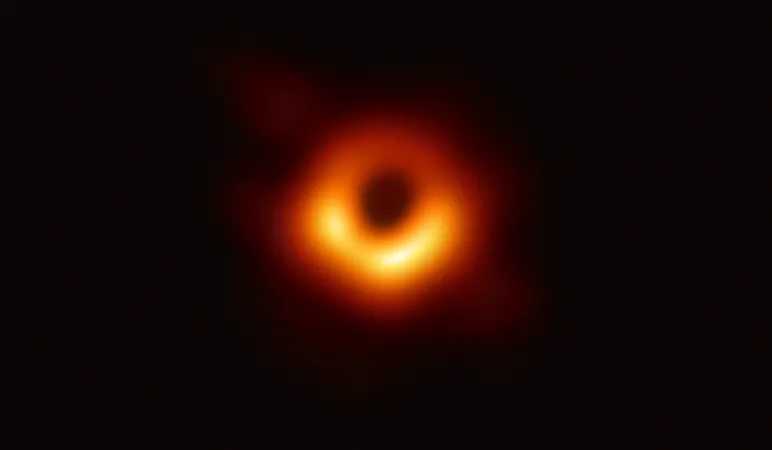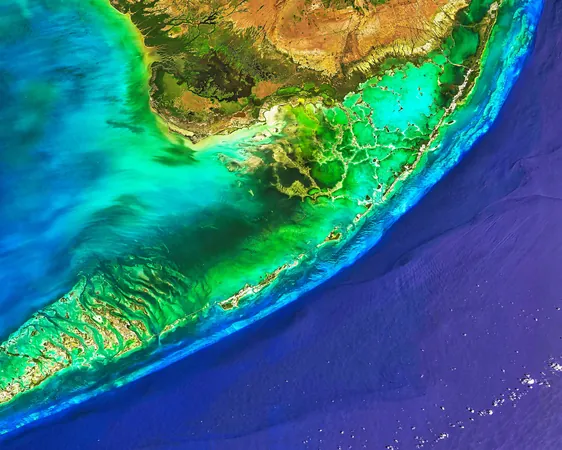
Stunning Discovery: Uranus' Moon Miranda May Host a Hidden Ocean!
2024-10-29
Author: Ming
Recent research has unveiled an astonishing possibility: Uranus' enigmatic moon Miranda could conceal a significant ocean beneath its icy surface. This revelation not only challenges conventional views of Miranda’s composition and history but also positions it among the rare celestial bodies in our solar system that may harbor environments conducive to life.
Co-author of the study, Tom Nordheim, a planetary scientist at the Johns Hopkins Applied Physics Laboratory, expressed his astonishment, stating, "To find evidence of an ocean inside a small object like Miranda is incredibly surprising." The study was published in The Planetary Science Journal, showcasing compelling new insights about one of the farthest moons in our solar system.
Miranda stands out for its unique and peculiar terrain, as captured in the fleeting images taken by Voyager 2 in 1986. The southern hemisphere of this moon reveals a hodgepodge of surface features, including deep grooves and stark craters, resembling a patchwork quilt. Researchers speculate that these bizarre geological characteristics result from tidal forces and internal heating.
A team led by graduate student Caleb Strom at the University of North Dakota revisited the data from Voyager 2. By reverse engineering the moon's surface features, such as cracks and ridges, the researchers developed a sophisticated computer model to simulate various possible interior structures of Miranda. To their surprise, the model that best replicated these stress patterns suggested a vast ocean existed beneath the icy crust—a revelation dating back 100 to 500 million years. This ocean could be at least 62 miles (100 kilometers) deep, hidden beneath a relatively thin icy shell measuring up to 19 miles (30 kilometers) thick.
Given Miranda’s radius of only 146 miles (235 kilometers), this ocean would account for nearly half of the moon's total volume. "That result was a big surprise to the team," noted Strom, highlighting the significance of their findings.
Integral to the formation of this ocean are the tidal forces exerted by Miranda’s interactions with neighboring moons. These gravitational tugs can be intensified by a harmonious orbital resonance, similar to that observed in Jupiter's moons Io and Europa, where their respective orbits interact in a way that maintains heat and geologic activity.
The researchers suggest that in the past, Miranda may have experienced a similar resonance with other Uranian moons, leading to the intense friction and warmth necessary to sustain a subsurface ocean. Nevertheless, as time progressed, these moons drifted into a less synchronized orbit, causing the interior of Miranda to cool over time. Remarkably, there are no signs that indicate a complete freezing of the ocean, which suggests that the moon may still retain some liquid water today.
The modern-day ocean beneath Miranda is likely to be quite thin, yet the mere notion of a hidden ocean in such a remote moon is nothing short of extraordinary. This newfound potential for an oceanic environment positions Miranda alongside other icy worlds like Saturn's moon Enceladus, which has also captivated scientists since the discovery of its subsurface ocean and active geological processes.
Enceladus has long been a focal point in the search for extraterrestrial life due to its geysers expelling water vapor and ice into space. Miranda's similarities in composition and size provide a tantalizing opportunity for researchers to explore the potential for habitability and perhaps even life. However, Nordheim cautions against jumping to conclusions: "We won’t know for sure that it even has an ocean until we go back and collect more data."
The quest to unlock the secrets of Uranus' moons is far from over. With the hope of future missions aimed at collecting comprehensive data on Miranda and its neighboring moons, scientists are eager to further explore the mysteries of these fascinating celestial bodies. As research continues, the potential for discovering life-sustaining environments in our solar system expands, keeping the curiosity of astronomers and space enthusiasts alike alive.




 Brasil (PT)
Brasil (PT)
 Canada (EN)
Canada (EN)
 Chile (ES)
Chile (ES)
 Česko (CS)
Česko (CS)
 대한민국 (KO)
대한민국 (KO)
 España (ES)
España (ES)
 France (FR)
France (FR)
 Hong Kong (EN)
Hong Kong (EN)
 Italia (IT)
Italia (IT)
 日本 (JA)
日本 (JA)
 Magyarország (HU)
Magyarország (HU)
 Norge (NO)
Norge (NO)
 Polska (PL)
Polska (PL)
 Schweiz (DE)
Schweiz (DE)
 Singapore (EN)
Singapore (EN)
 Sverige (SV)
Sverige (SV)
 Suomi (FI)
Suomi (FI)
 Türkiye (TR)
Türkiye (TR)
 الإمارات العربية المتحدة (AR)
الإمارات العربية المتحدة (AR)